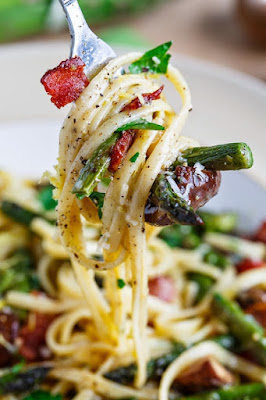
The buffalo is an American species of bison also called the American bison, simply bison or the American buffalo. The animal roamed North America in vast herds by 9000 BCE (Before Common Era, equivalent to BC, meaning Before Christ) described as the great bison belt, a tract of grassland that ran from Alaska to the Gulf of Mexico, east to the Atlantic seabord as far north as New York and south to Georgia and, according to some sources, down to Florida.
Due to a combination of commercial hunting and indiscriminate slaughter for only the hides in the 19th century, plus the introduction of bovine diseases from domestic cattle, the buffalo nearly became extinct. Historical records and statistics show that a population in excess of 60 million in the late 18th century was reduced to just 541 animals by 1889. Recovery efforts expanded in the mid-20th century and have resulted in a resurgence of wild bison, largely restricted to a few national parks and reserves.
A bison has a shaggy, long dark-brown winter coat, and a lighter-weight, lighter-brown summer coat. Male bison are considerably heavier than females. They are herbivores, grazing on the grasses and wedges of the North American prairies.
Stretching back many millennia, Native American tribes have had cultural and spiritual connections to the American bison. It is the national mammal of the United States of America.
How Did They Get To Catalina Island?
You might wonder how or why there are bison, also known as the American Buffalo, on Catalina Island. There are many stories about how they came to be but the most told tale is that they were brought over for the filming of Zane Grey's The Vanishing American in 1924. Fifteen head of bison were used to portray scenes of the American West. As the story goes, the parts of the film that contained the bison ended up on the editing room floor. However, with limited means to remove and wrangle the bison, Mr. William Wrigley, owner of Catalina Island, allowed the transplants to stay.
Where do they roam?
88% of Catalina Island is protected through the Catalina Island Conservancy. This land trust was set up in the early 1970s and includes 62 miles of beaches and coves and over 165 miles of trails and roads, including the 38.5 mile Trans Catalina Trail which traverses the entire island.
How many bison are on Catalina Island now?
The Catalina Island Conservancy takes the responsibility of maintaining a healthy herd of no more than 150 individual bison.
How do you see the bison?
You can see bison while driving, touring, hiking or biking within Catalina Island's interior. The Catalina Island Conservancy offers a Jeep EcoTour, the Catalina Island Company offers several tours that go into the interior including a specific Bison Tour and Catalina Island Adventure Tours offers several interior tours.
Bison can not come into the city of Avalon, but often do wander into Two Harbors and campgrounds in the interior. If you encounter a bison while hiking, camping or biking, please remember that they are free-roaming and undomesticated. They can act out if they feel threatened or provoked and interactions may cause serious injury. Exercise extreme caution.
How are bison celebrated on Catalina Island?
Enjoy a Buffalo Milk, pick up a stuffed bison or enjoy a bison burger on Catalina Island.
-
Roasted Asparagus and Mushroom Carbonara
Prep Time:10 minutes Cook Time:40 minutesTotal Time:50 minutes Servings: 4Roasted asparagus and mushrooms in a creamy and cheesy egg sauce with plenty of fresh cracked black pepper. -
- 1 pound asparagus, trimmed and cut into bite sized pieces
- 8 ounces mushrooms, quartered
- 1 tablespoon olive oil
- salt and pepper to taste
- 8 ounces fettuccine (or pasta of choice) (gluten free for gluten free)
- 4 ounces bacon cut into 1 inch pieces or 4 ounces pancetta, diced
- 1 clove garlic, chopped
- 2 eggs
- 1/2 cup (2 ounces) parmigiano reggiano (parmesan), grated
- plenty of fresh cracked black pepper
- salt to taste
- 1 tablespoon parsley, chopped
Across the nation each year on December 20th, National Sangria Day recognizes a wine and fresh fruit combination that brings a fresh celebration to the table.
Sangria is a beverage made with wine and sweetened with fresh fruit and fruit juices. Other ingredients can include herbs, spices, carbonation, and liquor. The combinations are endless, giving sangria a place in the cocktail rotation year-round. Refreshing and light during hot summer months, bright and sparkling during the winter ones, this fruity punch is quite versatile.
Sangria made with white wine is called Sangria Blanca.
Use fresh fruit in season for the best flavors. Once mixed, sangria should be chilled and the fruits allowed to marinate for a few hours or overnight. When making sangria, if you use 100% juice, you’ll gain the maximum benefits, too. Eating the fruit versus all the sweet cakes and pies over the holidays will be healthier. Get the benefits of red wine, but drink in moderation and sangria will be worth all the celebration.
HOW TO OBSERVE
Include sangria with your holiday celebrations. Add flavors that compliment your meals and bring sparkle to your evenings. Hostesses may offer more than one sangria to please the many palates of our guests, too. With so many recipes, it’s easy to please. Don’t hesitate to sample a few ahead of time. We offer a few different recipes to try. Share your favorites this holiday season. And then be sure to find more for the rest of next year, too!















No comments:
Post a Comment